Books
Books

Near, At
Near, At follows the inherent strangeness of one’s consciousness as it observes and comes into contact with the physical world. A sustained exploration of language, capitalism, gender, and nature, Near, At traverses and measures the movement of silence against the movement of thought and its pauses. Divided into five parts, each with its own form, and followed by a series of ongoing love poems called MY CHRISTOPHER POEMS, this debut collection is slow to assume but quick to adjust. Rooted in both the traditional and the experimental, it asks just how little of ourselves we can be.
"Jennifer Soong’s collection displays her nuanced understanding of how the philosophical-treatise-as-poem can birth an emotional and embodied intelligence, placing her in a line of affinity with contemporary writers such as Lyn Hejinian, Lisa Robertson and Anne Boyer. Simultaneously, Soong accomplishes something utterly unexpected in 2019: she casts a harpoon into the New England landscape poem – long linked to the genteel, the male, the WASP – and brings it vibrant and expansive into the twenty-first century. Certain poetry collections are written to be 'of the moment,' but a collection such as Near, At is written to give pace to those moments, with each carefully placed word a further step taken by the poet and reader together. Come near, these poems tell us, and we feel we’ll arrive at exactly the time and place we need to be."
—Mia You

Hotel #5
Jon Auman, Thomas Chadwick and 1 more
Established in 2016, Hotel is a magazine for new approaches to fiction, non fiction & poetry. Hotel features work from established & emerging talent.Hotel provides the space for experimental reflection on literature’s status as art & cultural mediator.

Detour/Détours (Hotel Cordel No. 1)
Cécile Menon, Dominic Jaeckle and 1 more
Detour/Détours imagines debt as a language game: as a broken pun; a break in a journey; a play on value and the meaning of money as it changes hands. Or in terms of Guy Debord’s détournement — as a debt reimagined through the integration of old works into something new.
The word debtor owes etymologically to the old French deteur. But — moving into English — its first appearance dates back to the early 13th century and — sounded out as dettur, dettour or detour — debt can be read as an elaboration on the mottled intimations of a detour with a little poetic license. A detour is a deviation, a digression; a play on our various senses of direction. Exploring the will, want or need to take the long way around — and seeking to bastardize and scrutinize our relationship with (and conceptualization of) a statement of debt — here we have a set of searching works that critique all our methods of repayment. Participating authors were given free rein to produce a piece of writing in response to these ideas, and the works included herein — five first English-language translations and five original texts — wind their way around the weight of the word ‘debt’ in ten attempts to reroute its meaning.
Questions of Worth by Noémi Lefebvre, translated by Natascha Lasorak and Sophie Lewis
Silent B by Lauren Elkin
A Problem of the Greek Type by Mathieu Larnaudie, translated by Adrian Nathan West
Emotional Debt/Speed of Recovery Matrix by Selma Dabbagh
Debt Night by Preti Taneja
The Pastoral Calculation by Sandra Lucbert, translated by Jessica Spivey
The Debt Collector by Jen Calleja
Unknown Soldier by Nicolas Bouyssi, translated by Amanda DeMarco
Good Relations by Joanna Walsh
Out of Debt by Thomas Clerc, translated by Jeffrey Zuckerman
Edited by Emmanuel Bouju, Dominic Jaeckle & Cécile Menon
Limited Edition of 300 copies
180 x 120, paperback, 78 pages
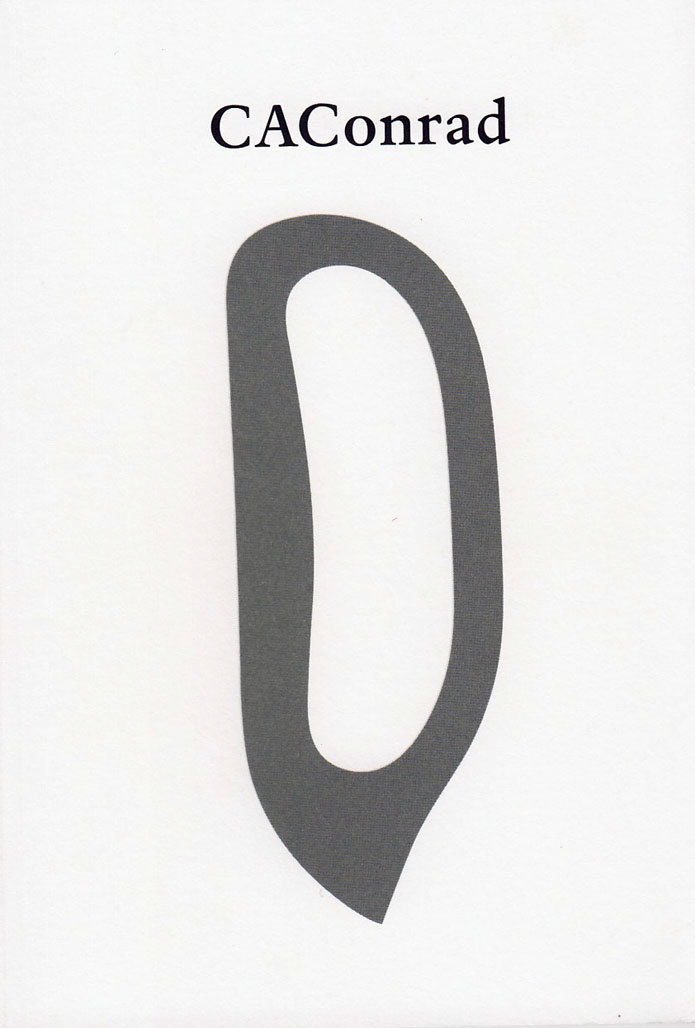
(Soma)tic and resulting poems
A collection of new poems following their (Soma)tics practice.
Fivehundred places was founded in 2012 by Jason Dodge. With a single printing of 500 copies, each book will find itself in one of 500 places. On the cover of each book is a dead scissor by Paul Elliman.
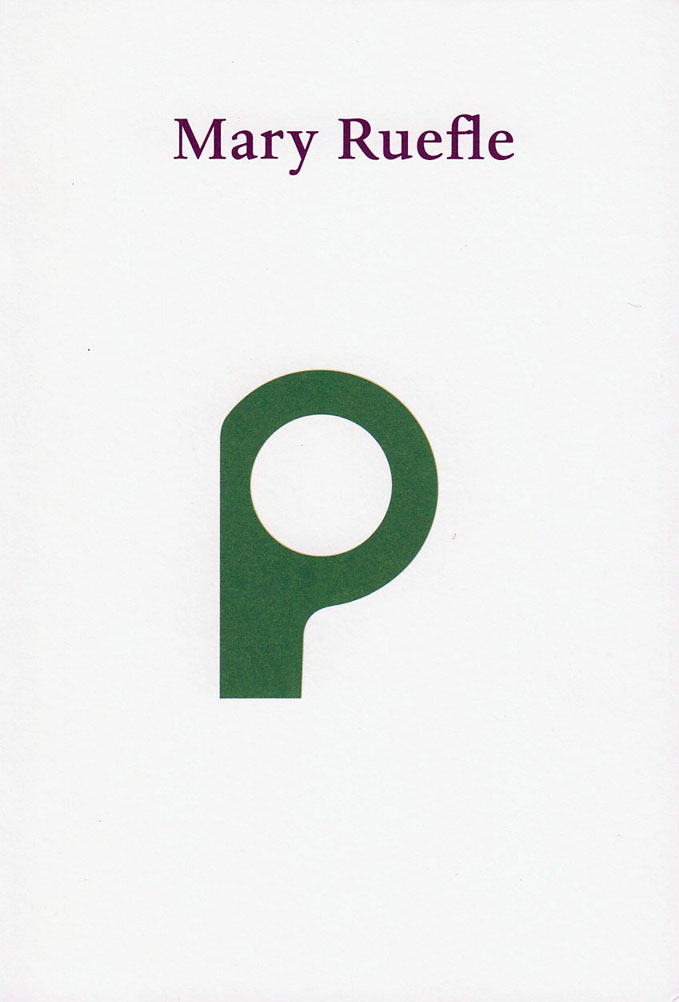
poems from Post Meridian
A collection of poems from their book Post Meridian.
Fivehundred places was founded in 2012 by Jason Dodge. With a single printing of 500 copies, each book will find itself in one of 500 places. On the cover of each book is a dead scissor by Paul Elliman.

Collected Poems
Collected poems by Heather Christle.
Fivehundred places was founded in 2012 by Jason Dodge. With a single printing of 500 copies, each book will find itself in one of 500 places. On the cover of each book is a dead scissor by Paul Elliman.
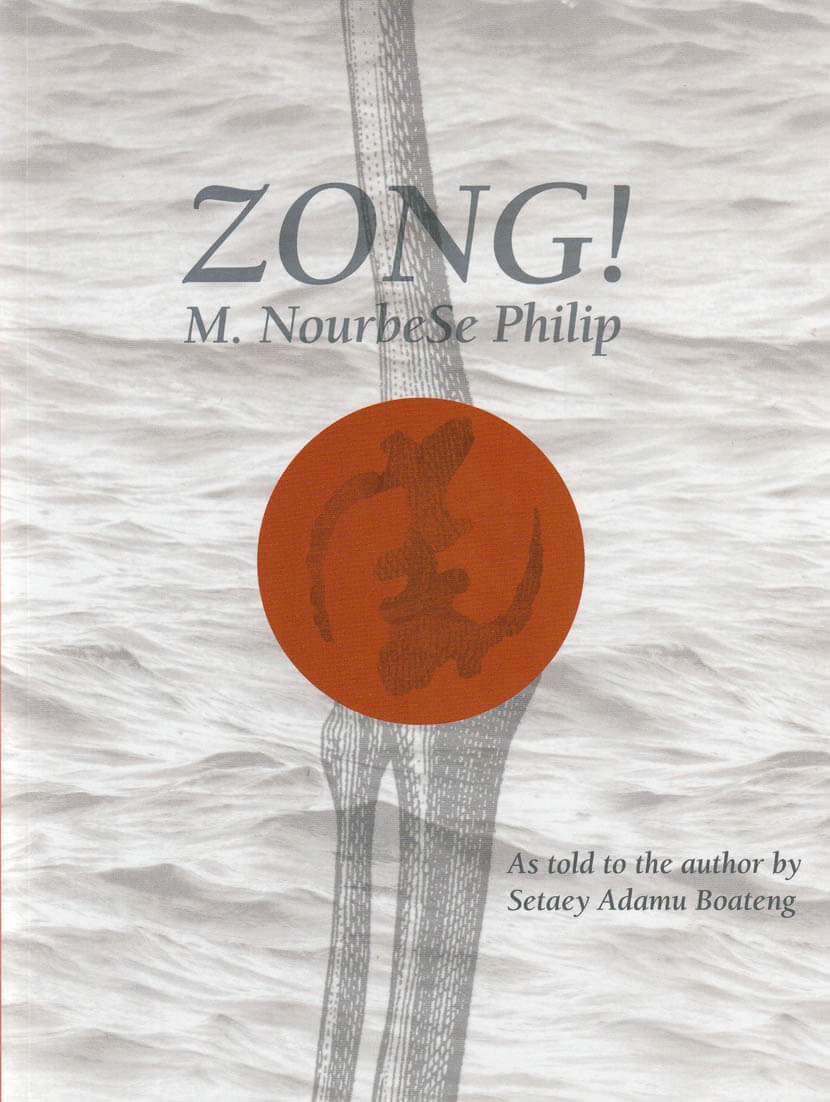
Zong!
In November, 1781, the captain of the slave ship Zong ordered that some 150 Africans be murdered by drowning so that the ship’s owners could collect insurance monies. Relying entirely on the words of the legal decision Gregson vs Gilbert—the only extant public document related to the massacre of these African slaves—Zong! tells the story that cannot be told yet must be told. Equal parts song, moan, shout, oath, ululation, curse, and chant, Zong! excavates the legal text. Memory, history, and law collide and metamorphose into the poetics of the fragment. Through the innovative use of fugal and counterpointed repetition, Zong! becomes an anti-narrative lament that stretches the boundaries of the poetic form, haunting the spaces of forgetting and mourning the forgotten.
"A haunting lifeline between archive and memory, law and poetry."

Neotenica
A slippery novel set in the Bay Area of the early aughts, where femininity, race, and class tangle together.
Neotenica is a novel of encounters: casual sex, arranged-marriage dates, cops, rowdy teenagers, lawyers, a Sapphic flirtation, a rival, a child, and two important dogs. At the center of it are Young Ae, a Korean-born ballet dancer turned PhD student, and her husband, a Korean-American male who inhabits an interior femininity, neither transgender nor homosexual, but a strong, visceral femininity nonetheless. This novel is an adrenaline-filled ride sliding across the surface of desire and chance through the quotidian turned playful.
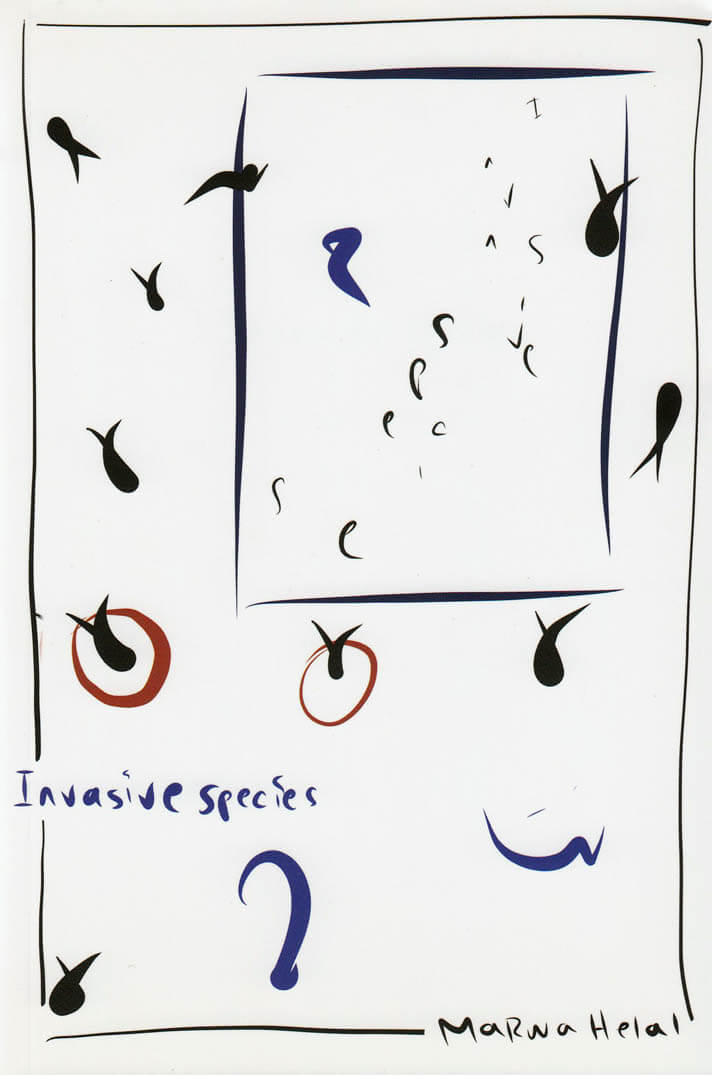
Invasive Species
A vernacular debut that uncompromisingly journeys towards its sole destination: the decolonization of the imagination.
In Invasive species, Marwa Helal’s searing politically charged poems touch on our collective humanity and build new pathways for empathy, etching themselves into memory. This work centers on urgent themes in our cultural landscape, creating space for unseen victims of discriminatory foreign (read: immigration) policy: migrants, refugees—the displaced. Helal transfers lived experiences of dislocation and relocation onto the reader by obscuring borders through language.

Bruce Boon Dismembered
Bruce Boone Dismembered collects nearly five decades of writing by Bruce Boone, a founder of New Narrative and critical figure at the crossroads of late-twentieth-century avant-garde and social movement writing. At once sexy and political, gossipy and scholarly, this crucial volume includes poems, stories, essays, interviews, and reviews.
In a time of disorder and disease, Boone’s body of work acts as a mirror to our dismembered global reality. This scavenged, collaged, taped-together collection provides a “map to negotiate perils” and guides us toward reconciliation with perilous futures. This book exemplifies the poignancy that might emerge from the found and frenetic.

Agatha Bauer
Maru Mushtrieva, Romy Kießling and 1 more
The title of publication series ‘Agathe Bauer’ stands for a broadly misheard hook “I’ve got the power” from a German 1990 Eurodance hit ‘The Power’ by the band Snap! The hook that turned the song into a hit, came from Jocelyn Brown’s track ‘Love's Gonna Get You’, but neither her name nor the track appears in the credits. And, here is where Agathe Bauer comes in - a mysterious being who acquires agency through the homophonic misinterpretation of the main hook “I’ve got the power”.
In ‘Issue Zero: Picking Up Promises’ Agathe has an agenda. Nothing could be as it would have been, but she is here to trace the sources of how it has become. Agathe Bauer is here to analyze the capacity of misinterpretation to unveil asymmetric power structures in knowledge systems and by tuning into the social-political, cultural and aesthetic dimension of it.
‘Issue Zero: Picking Up Promises’ features contributions by: Gabriela Acha, [{“CIBELLE”(CAVALLI}BASTOS)], Lynn Hershman Leeson, Romy Kießling, Markues, Luzie Meyer, Maru Mushtrieva, Claudia Pagès, Ruth Wolf-Rehfeldt, Miriam Stoney, Christine Sun Kim, Eric Winkler, Miriam Yammad, Anna Zett.
Conceptualized and edited by Gabriela Acha, Romy Kießling, Maru Mushtrieva.
Designed by Timur Akhmetov.

HULL
In this debut collection by African American poet Xandria Phillips, HULL explores emotional impacts of colonialism and racism on the Black queer body and the present-day emotional impacts of enslavement in urban, rural, and international settings. HULL is lyrical, layered, history-ridden, experimental, textured, adorned, ecstatic, and emotionally investigative.
Xandria Phillips is a poet and visual artist from rural Ohio. They are the author of Reasons For Smoking, which won the 2016 Seattle Review chapbook contest judged by Claudia Rankine. Their poem "For a Burial Free of Sharks" won the 2016 Gigantic Sequins poetry contest judged by Lucas De Lima. Xandria is the poetry editor at Honeysuckle Press, and a teaching artist for Winter Tangerine's NYC workshops. Their work is featured or forthcoming from Virginia Quarterly Review, Black Warrior Review, Crazyhorse, West Branch, and elsewhere.

You Were Born For This
In her first book You Were Born For This, Chani shows how your birth chart—a snapshot of the sky at the moment you took your first breath—reveals your unique talents, challenges, and opportunities. Fortified with this knowledge, you can live out the life you were born to. Marrying the historic traditions of astrology with a modern approach, You Were Born for This explains the key components of your birth chart in an easy to use, choose your own adventure style. With journal prompts, reflection questions, and affirmations personal to your astrological makeup, this book guides you along the path your chart has laid out for you.
Chani makes the wisdom of your birth chart accessible with three foundational keys:
- The First Key: Your Sun (Your Life's Purpose)
- The Second Key: Your Moon (Your Physical and Emotional Needs)
- The Third Key: Your Ascendant and Its Ruler (Your Motivation for Life and the Steersperson of Your Ship)
Astrology is not therapy, but it is therapeutic. In a world in which we are taught to look outside of ourselves for validation, You Were Born for This brings us inward to commit to ourselves and our life's purpose.

Un-Break My Walls
The first monograph on Christiane Blattmann takes its title from her solo show Un-Break My Walls at Kunsthalle Münster in 2019. Blattmann intricately interweaves, intermeshes, combines, compounds, merges, and processes in her work not only materials but also structures, things, stories, characters. The volume includes extensive illustrations of exhibitions, projects, and works, and a great number of black-and-white images capture the artist’s studio practice. The interactions of materials, along with theoretical and literary references, serve as important points of departure, and the emblematic outcomes involve text and texture as material structure and patterned surface; vivid condensation and entanglement; and invitations to exploration and reflection. The book compiles different elements designed on a series of shifting layers. Texts by Merle Radtke and Chloe Stead and a conversation between Christiane Blattmann and Than Hussein Clark provide insight into Blattmann’s art, complemented by a piece of fiction by Huw Lemmey.
Texts by Merle Radtke, Huw Lemmey, and Chloe Stead, and a conversation between Christiane Blattmann and Than Hussein Clark
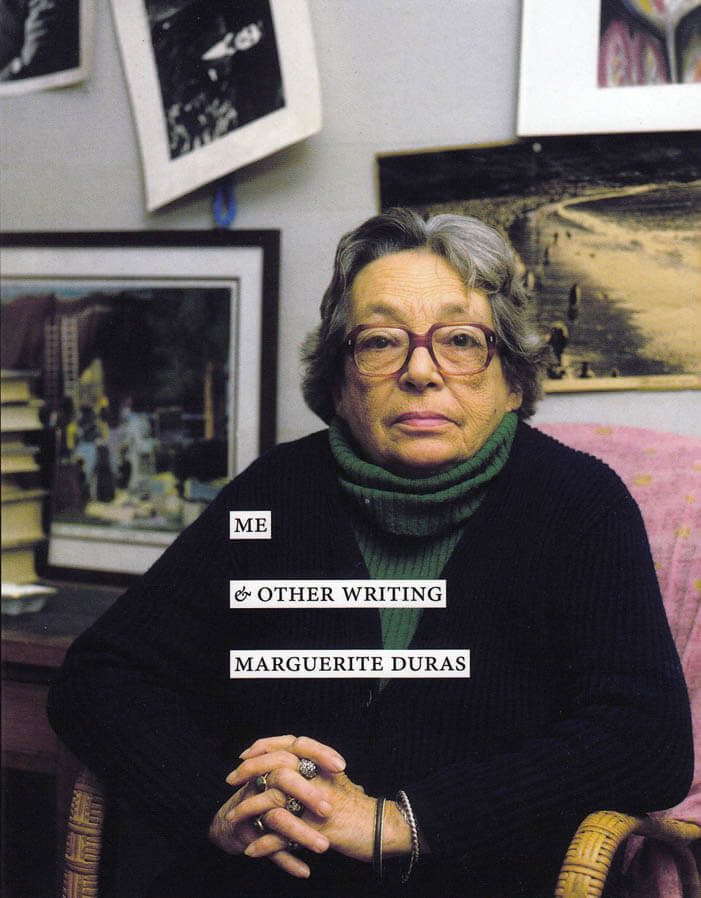
Me and Other Writing
A guidebook to the extraordinary breadth of Duras's nonfiction. From the stunning one-page "Me" to the sprawling 70-page "Summer 80," there is not a piece in this collection that can be easily categorized. These are essayistic works written for their times but too virtuosic to be relegated to history, works of commentary or recollection or reportage that are also, unmistakably, works of art.

Cunt-Ups
Dodie Bellamy's Cunt-Ups - first published in 2001 and recipient of the Firecracker Award for Innovative Poetry— was immediately a controversial and celebrated work. Using the "cut-up" method of William S. Burroughs, Cunt-Ups is a work of sex magick, based on source texts from old lovers and Jeffery Dahmer transcriptions. The resulting spell queers everything around it.
Dodie Bellamy's writing focuses on sexuality, politics, and narrative experimentation, challenging the distinctions between fiction, essay, and poetry. She is the 2018-19 subject of the CCA Wattis Institute for Contemporary Art's On Our Mind program, a year-long series of public events, commissioned essays, and reading group meetings inspired by an artist's writing and lifework. Have a look at her collection When the Sick Rule the World, from Semiotext(e). Her essay, "The Beating of Our Hearts," was presented at the 2014 Whitney Biennial. With Kevin Killian she edited for Nightboat Books WRITERS WHO LOVE TOO MUCH: NEW NARRATIVE 1977-1997.
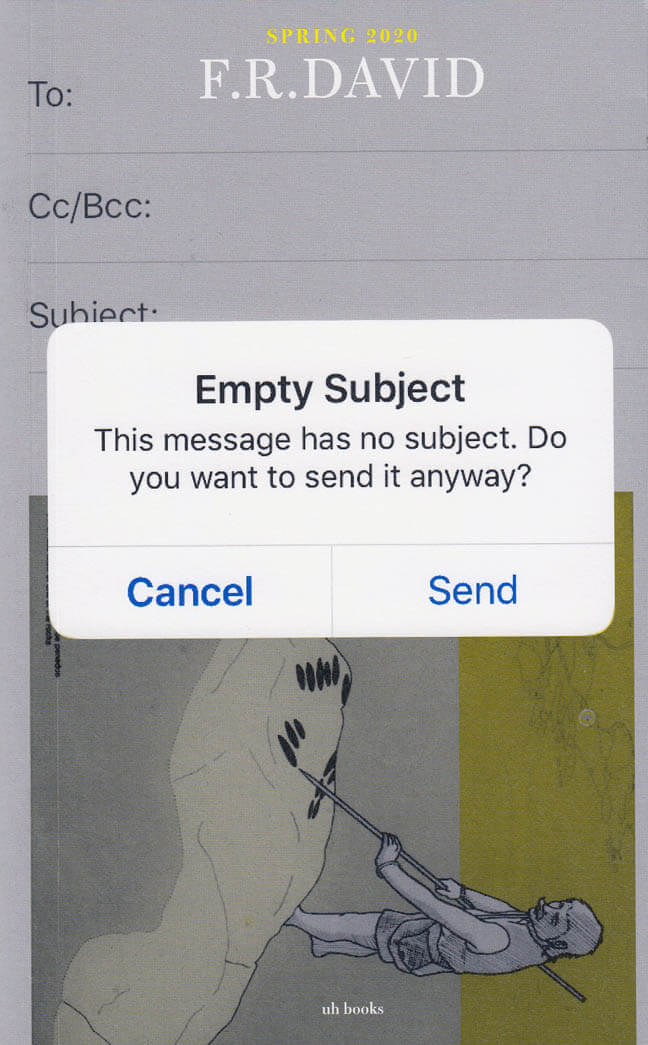
F.R. David - Very Good
F.R.DAVID is a typographical journal, dealing with the organisation of reading and writing in contemporary art practises. The 19th issue, “very good*” is edited with Paul Abbott. Like music, the issue’s “theme” is better off unaccounted for, and up in the air, like a flock of birds (creatures who feature heavily), circling around performance, listening bodies, given time, and loving relations.
The nineteenth issue of ‘F.R.DAVID’ is edited by Will Holder and Paula Abbott, and will serve as a reader for “We can still see the horizon (and it’s curved)”, a summer residency in Scotland led by the editors. It includes a surprising array of contributions from writer Jorge Luis Borges, journalist and writer Italo Calvino, composer Hugo Cole, literary critic and theorist Barbara Herrnstein Smith, percussionist Milford Graves, philosopher Michel Serres, novelist and essayist Wilson Harris, poet Bernadette Mayer, composer and music theorist Harry Partch, pianist and poet Cecil Taylor, and several others.
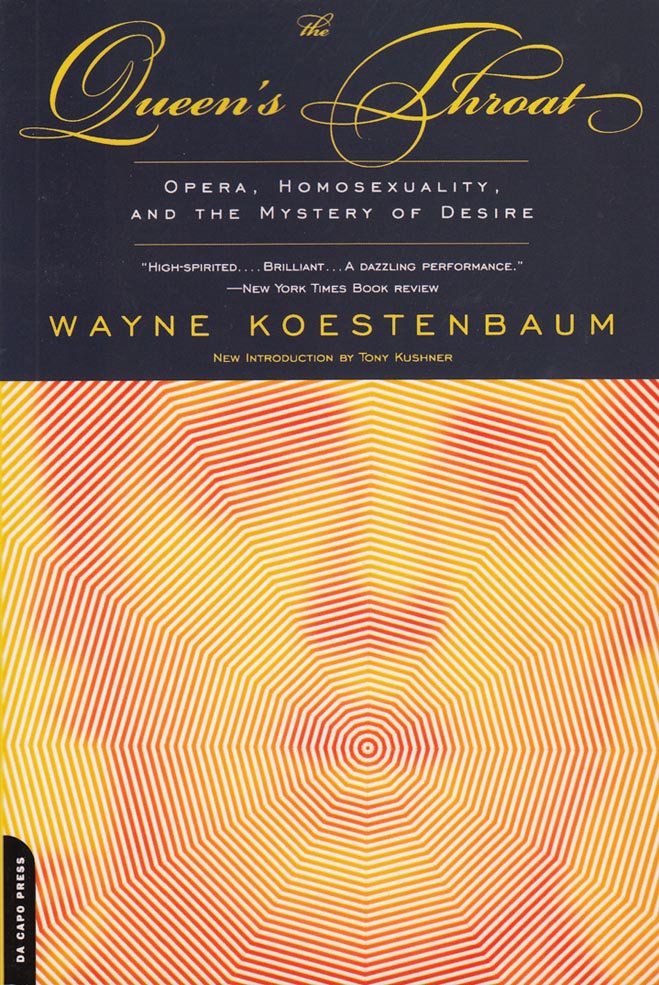
The Queen's Throat
This passionate love letter to opera, lavishly praised and nominated for a National Book Critics Circle Award when it was first published, is now firmly established as a cult classic. In a learned, moving, and sparklingly witty melange of criticism, subversion, and homage, Wayne Koestenbaum illuminates mysteries of fandom and obsession, and has created an exuberant work of personal meditation and cultural history.
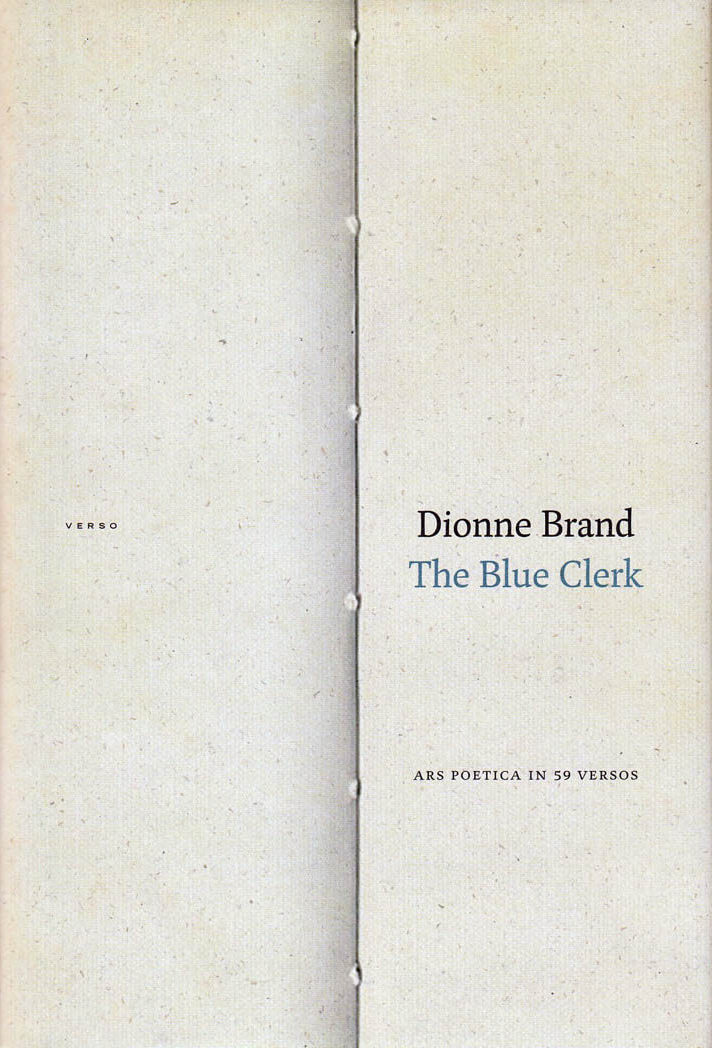
The Blue Clerk
On a lonely wharf a clerk in an ink-blue coat inspects bales and bales of paper that hold a poet's accumulated left-hand pages—the unwritten, the withheld, the unexpressed, the withdrawn, the restrained, the word-shard.
In The Blue Clerk renowned poet Dionne Brand stages a conversation and an argument between the poet and the Blue Clerk, who is the keeper of the poet's pages. In their dialogues—which take shape as a series of haunting prose poems—the poet and the clerk invoke a host of writers, philosophers, and artists, from Jacob Lawrence, Lola Kiepja, and Walter Benjamin to John Coltrane, Josephine Turalba, and Jorge Luis Borges.
Through these essay poems, Brand explores memory, language, culture, and time while intimately interrogating the act and difficulty of writing, the relationship between the poet and the world, and the link between author and art. Inviting the reader to engage with the resonant meanings of the withheld, Brand offers a profound and moving philosophy of writing and a wide-ranging analysis of the present world.
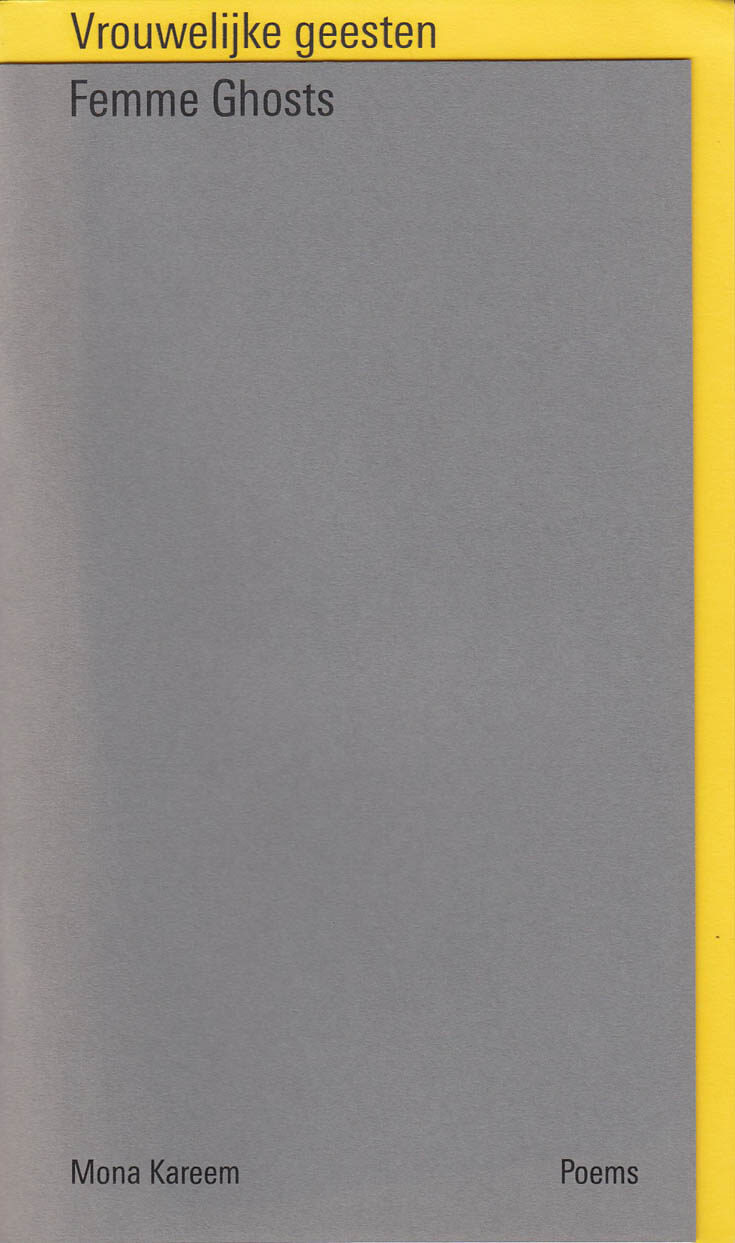
Vrouwelijke Geesten
Femme Ghosts is the result of Mona Kareem’s residency at Poetry International 2019, published in collaboration with Publication Studio Rotterdam. In this series of eight poems, Kareem continues her echoing of women’s voices—the pirate women, busy with their dreams, dwelling on future pasts, indulging in their loneliness. Femme Ghosts is double-direction bound trilingual publication, and includes Kareem’s poetry in Arabic, English and Dutch.
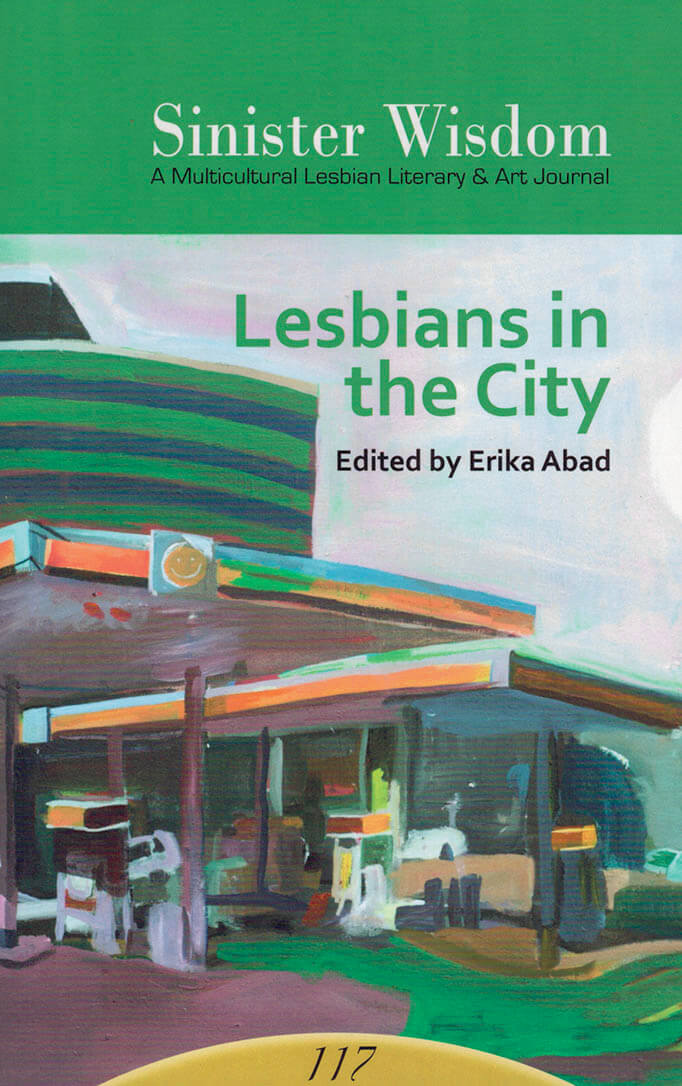
Lesbians in the City
How do lesbians live in the city, whether they live in the city by themselves or within intentional community? How does the city change what being a lesbian means? Sinister Wisdom 117: Lesbians in the City explores these questions—and many more.
The issue features creative work by: Srestha Sen, Carina Julig, Roin Morigeau, t pomar, Rita Mookerjee, Margarita Meklina as well as SPORTS — a selection of work from the Southern Lesbian Feminist Activist Herstory Project, edited by Rose Norman and Merril Mushroom. Plus a great selection of new lesbian writing!

Poetic Intention
This is the first English-language translation of Poetic Intention, Glissant’s classic meditation on poetry and art. In this wide-ranging book, Glissant discusses poets, including Stéphane Mallarmé and Saint-John Perse, and visual artists, such as the Surrealist painters Matta and Wilfredo Lam, arguing for the importance of the global position of art. He states that a poem, in its intention, must never deny the “way of the world.” Capacious, inventive, and unique, Glissant’s Poetic Intention creates a new landscape for understanding the relationship between aesthetics and politics.

queer city, a reader
A collection of essays, artistic contributions, and two inserted zines, Queer City, A Reader was developed as part of an 18-month inquiry in São Paulo. Initiated by Lanchonete.org and ArtsEverywhere/Musagetes, the Queer City program was a broad collective inquiry into how can we understand the contemporary city through a queer, intersectional, non-normative lens. The program included a series of encounters, dinners, residencies and performances, and Queer City, A Reader reconfigures these moments into a new form, extending the inquiry trans-nationally.
With contributions by Todd Lanier Lester, Shawn Van Sluys, Jota Mombaça, Bruno Mendonça and Nat Cout, João Marcelo and Claudio Bueno, Juliana Santos, Thiago Carrapatoso, Bibi Abigail, Carué Contreiras, Bruno Puccinelli, Vitor Grunvald, Kadija, Regis Mikail, Sabrina Duran, Jean-François Prost, Niki Singleton, Thiago Hersan, Ternura Radical and the Queer Graphics Laboratory. Edited by Júlia Ayerbe and designed by Laura Davinas of Edições Aurora/Publication Studio São Paulo. The English version of this book was published by Publication Studio Guelph. It is available in Portugese from Publication Studio São Paulo. Printed by Publication Studio Rotterdam for rile*.
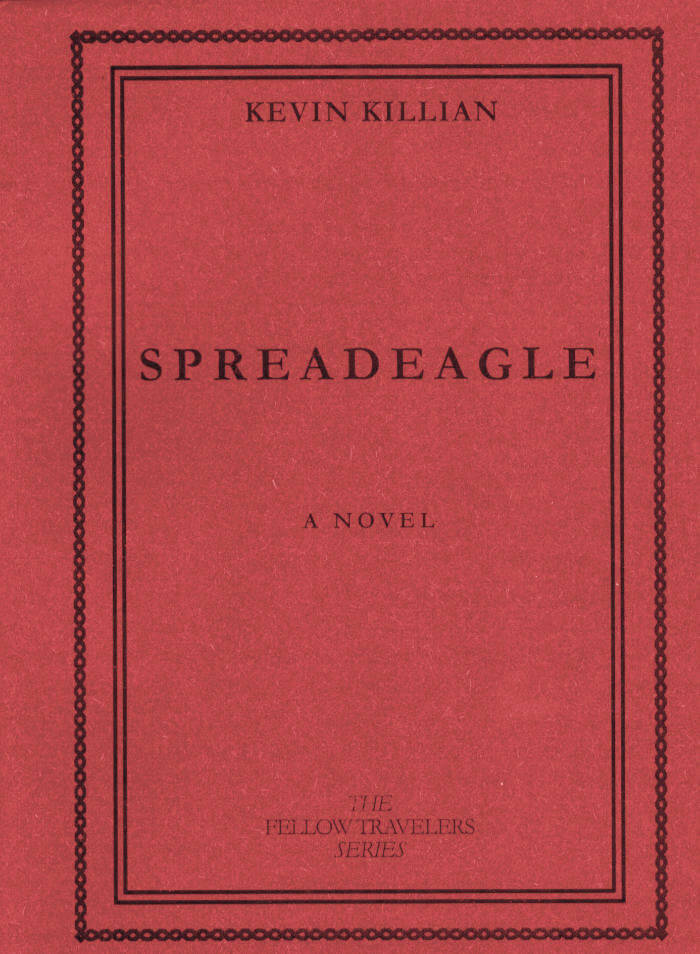
Spreadeagle
New Narrative pioneer Kevin Killian's novel, Spreadeagle, has been two decades in the making. Skating nimbly over the vast surface of pop history through a forest of movie stars, pop sensation and dazzling social technologies, Killian undoes the ties that bind a half-dozen Californian men—Daniel Isham, the powerful, popular gay novelist; Kit Kramer, his insecure activist boyfriend; Daniel's father, Ralph Isham, the world-renowned poet who haunts him in death; Eric Avery, the Duchamp-loving twink who wins Kit's heart; and the shadowy Radley brothers, Adam and Gary, who destroy them all. This is the great gay novel that America has been waiting for.
Publication Studio's Fellow Travelers series extends the pioneering work of Paris-based Olympia Press's Traveller's Companion series of the 1950s and 60s, which published work that had been banned or censored through moralistic prohibition. Our series presents great new work that has been effectively 'censored' by the market. In our day, the market is the definitive censor. The Fellow Travelers series proudly presents great work that the market has not endorsed, but that we believe in.